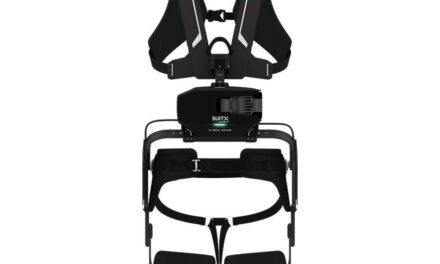Staying active is important during the COVID-19 pandemic, and for many people, that means pursuing outdoor activities where fresh air is plentiful and social distancing is easier to achieve. During winter months, that includes popular seasonal activities such as sledding, ice skating, skiing and more.
While doctors applaud people for staying active and keeping safety measures in mind, they also are preparing for an uptick in injuries associated with these types of activities. Many winter outdoor activities may appear safer when it comes to spreading viruses. However, they still carry the inherent risk of physical injury, and it’s important to take special precautions to protect yourself and family.
Consider skiing and snowboarding, for example. Falls are common whether you’re new or are experienced in these sports. Technique and safety gear can make a big difference, American Academy of Orthopaedic Surgeons notes in a media release.
“Ski season is coming, and ACL tears are common. Research has shown that keeping your arms forward and hips over the knees can reduce the risk of injury. Many injuries occur from falling backwards and the knee twisting. Make sure your bindings are appropriately adjusted for your ability. For snowboarders, wrist injuries are common, and based on research I’d recommend wrist guards for protection.”
— orthopaedic surgeon and AAOS spokesperson Jason Koh, MD, FAAOS
Stats and Safety Tips
According to the Consumer Product Safety Commission (CPSC), more than 119,625 skiing- and snowboarding-related injuries are treated in emergency departments, doctors’ offices and clinics annually. However, there are many other winter activities where it’s important to be mindful of injury and take smart steps to stay safe. Annually, health care facilities treat more than 20,177 snowmobiling-related injuries, more than 23,110 sledding and tobogganing-related injuries, and more than 43,596 ice skating-related injuries, AAOS states in a media release.
Before you head outdoors to enjoy your favorite winter activities, consider these smart safety tips from Dr. Koh and fellow bone and joint health experts at AAOS.
- Gear up: Always wear appropriate protective gear for whatever activity you’re doing. This includes helmets, gloves, goggles and padding. Remember, for kids, gear from last year may not fit this year due to growth. Use new or updated gear that fits properly for the best protection.
- Choose proper footwear: Make sure footwear is the right size and fits properly. For sports like ice skating and skiing that require special footgear, rent or upgrade if options no longer fit or are damaged. For other outdoor activities, use high-quality winter boots with a non-slip base, such as a rubber sole. Wear long socks and keep insides of footwear dry.
- Wear layers: For warmth and protection when playing outside, wear several layers of light, water- and wind-resistant clothing. Layering allows you to accommodate your body’s constantly changing temperature. Choose layers that aren’t too tight or loose to help the body breathe while also retaining heat and blocking the wind.
- Warm up and stay aware: Before you head outdoors for any activity, warm up muscles with light exercise for 10 minutes. When outdoors, don’t overdo activities and recognize when fatigue is setting in and you need to take a break or call it a day. Pushing yourself when your body is exhausted can increase risk of injury to yourself and others.
- Know and abide by the rules: Every winter sport has unique rules and even etiquette that often stem from safety concerns. If you’re not sure, ask. Use all equipment as it’s intended, and if you’re new to an activity, consider taking a lesson that includes learning how to fall correctly to reduce the possibility of an injury. If taking a lesson, ensure to follow COVID-19 guidelines.
- Stay aware: Seek shelter and medical attention immediately if you or anyone with you is experiencing hypothermia or frostbite. Frostbite signs include numbness and skin that is waxy or discolored skin that is yellow, gray or blue. Hypothermia signs include shivering, exhaustion, confusion and slurred speech. If you find yourself in an emergency, dial 911.
“We want to share bone and joint safety information to help reduce the likelihood of falls and injuries, as well as provide general injury prevention tips to keep people healthy and enjoying the outdoors throughout winter. With a few proactive steps everyone can maximize winter without putting their musculoskeletal frames at risk.”
— Jason Koh, MD, FAAOS
[Source(s): American Academy of Orthopaedic Surgeons, PR Newswire]
Related Content:
Drastic CMS Proposal Could Have Unintended Consequences, AAOS Shares
The OrthoForum Recognizes AAOS as Its Official Registry Program
Concussion in High School Athletics Continues to Rise Despite Best Efforts, Per AAOS Study





